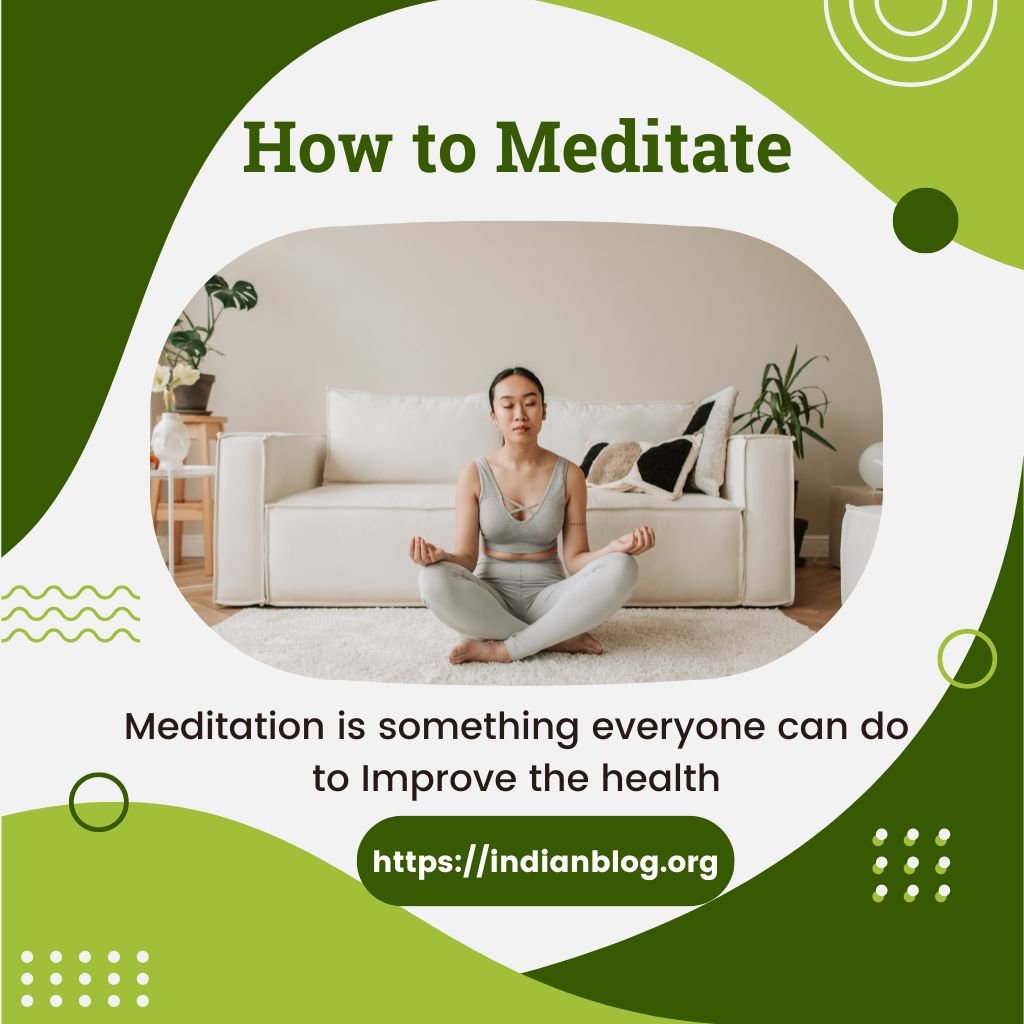Meditation is a simple yet powerful practice that can help to reduce stress and anxiety, improve focus and concentration, and promote overall well-being. Meditation can be a powerful tool for improving your mental and physical well-being. In this blog few steps to meditate has been described. Give it a try and see the difference it can make in your life.
Meditation is a simple practice that can reduce stress, increase calmness, clarity, and promote happiness.
Time needed: 15 minutes
Meditation is something everyone can do, and it’s simpler than you think. Here are some steps to help you get started with meditation:
- Take a seat
Find a quiet, comfortable place to sit. You can sit on a chair, cushion, or mat. Make sure your back is straight and your feet are firmly planted on the ground. The place shall make feels calm and quiet to you.
- Notice your body
You can sit in a chair with your feet on the floor, you can sit loosely cross-legged, you can kneel—all are fine. Just make sure you are stable and in a position, you can stay in for a while.
- Feel your breath
Close your eyes and focus on your breath. Pay attention to the sensation of the breath as it enters and exits your nose or mouth, You can count your breaths if it helps you to focus. Follow the sensation of your breath as it goes in and as it goes out. If your mind wanders, gently bring your focus back to your breath.
- Set a time limit
Start with a few minutes of meditation, and gradually increase the time as you become more comfortable with the practice. If you’re just a beginning, you may choose a short time, such as 1 or 5 minutes. Otherwise, you can set a time of 10 or 15 minutes.
- Notice when your mind has wandered
Inevitably, your attention will leave the breath and wander to other places. When you get around to noticing that your mind has wandered—in a few seconds, a minute, five minutes—simply return your attention to the breath.
- Be kind to your wandering mind
Don’t judge yourself or obsess over the content of the thoughts you find yourself lost in. Just come back. It’s important to be patient with yourself and not get discouraged if you find it difficult to focus at first. Remember to be kind to yourself and not to expect perfection. Meditation is a practice, and it’s normal to have moments of distraction or restlessness. Meditation takes practice and consistency.
- Close with kindness
When you’re ready, gently lift your gaze (if your eyes are closed, open them). Take a moment and notice any sounds in the environment. Notice how your body feels right now. Notice your thoughts and emotions.
- Establish a regular practice
Try to meditate at the same time each day to make it a habit. There are many different types of meditation, such as mindfulness meditation, loving-kindness meditation, and transcendental meditation. Experiment with different types to find which one works best for you. You can also use guided meditations which are easy to find online or through meditation apps.
- Understand Meditation
Finally, meditation is not only about sitting down and closing your eyes, you can also meditate while doing other activities such as walking, running, doing yoga or even while doing the dishes.
That’s it! That’s the practice. You focus your attention, your mind wanders, you bring it back, and you try to do it as kindly as possible (as many times as you need to).
Another way to incorporate meditation into your daily routine is to use “micro-meditations.” These are short, focused moments of mindfulness that can be practiced throughout the day. For example, you can take a few deep breaths and focus on your breath during a break at work, or take a few minutes to focus on the present moment while you’re waiting in line at the grocery store.
Additionally, you can incorporate body scan meditation. This is a technique that involves lying down and focusing on different parts of the body, starting from the toes and working your way up to the head. This type of meditation can be especially helpful for individuals who find it difficult to sit still or focus on the breath.
It’s also important to mention that, while meditation can be a powerful tool for improving mental and physical well-being, it’s not a magic cure-all. It’s important to take care of yourself in other ways as well, such as getting regular exercise, eating a healthy diet, and getting enough sleep. In summary, to start meditating you should :
- Find a quiet, comfortable place to sit
- Close your eyes and focus on your breath
- Start with a few minutes of meditation, and gradually increase the time
- Experiment with different types of meditation
- Establish a regular practice
- Incorporate micro-meditations into your daily routine
- Incorporate body scan meditation
- Remember to be kind to yourself and not to expect perfection
- Combine meditation with other self-care practices like exercise, healthy diet and good sleep.
Meditation is a simple yet powerful practice that can help to reduce stress and anxiety, improve focus and concentration, and promote overall well-being, it just takes practice and patience to master it.
Are you ready to pitch your content on the Indian Blog? Submit your guest post here.



